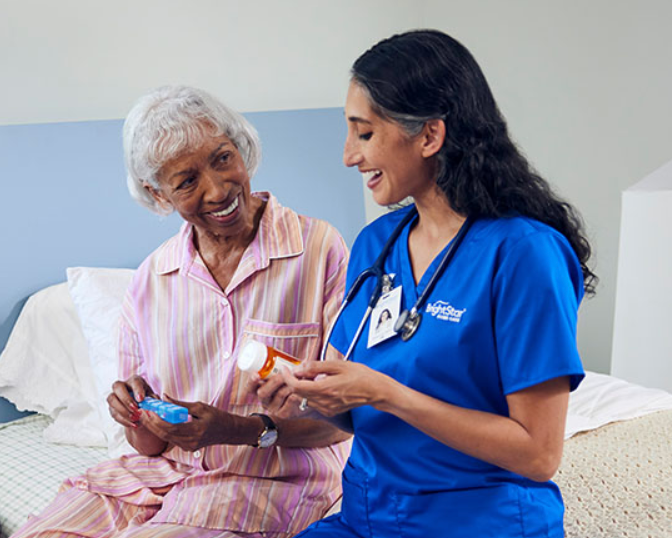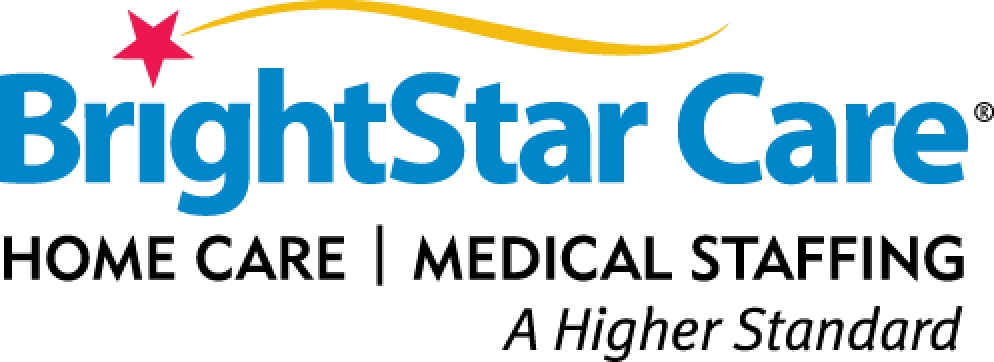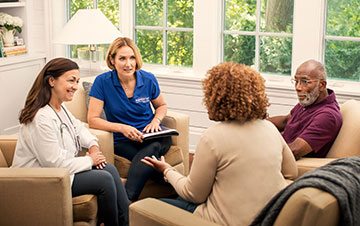Millennials: A younger generation caring for senior loved ones
BRIGHTSTAR CARE MN
For more information about the author, click to view their website: Bright Star Care Burnsville
Jul 28, 2024
Minnesota - Twin Cities Metro Area
Email US
Click to Email UsThe Baby Boomer generation currently ranges in age from their mid-50s to mid-70s. As this population gets older, a growing number of Millennials (currently 25 to 40 years old) are assuming the role of caregiver for their parents or grandparents. In fact, an estimated 10 million Millennials in the US serve as the primary supporter for an aging loved one. This accounts for one in four family caregivers.
Common Struggles Millennial Caregivers Face
If you have become a caregiver as a 20- or 30-something, you probably encounter certain challenges every day. The struggles listed here are not necessarily exclusive to Millennial caregivers. However, your journey may be somewhat unique because of where you’re at in life when caregiving becomes your responsibility.
- Navigating the healthcare system: HIPAA restrictions, insurance issues, and other aspects of our complex healthcare system make it difficult for young caregivers to advocate for their parents and grandparents.
- Finding emotional and mental health support: While caregiving can be incredibly fulfilling, it also comes with emotional and mental health struggles. Many resources assume the caregiver is an older Generation Xer, not a Millennial with a young family of their own. As a result, burnout and stress are prevalent among young family caregivers.
- Stalled career and delayed higher education: Millennials are more likely to still be in school or working toward career advancement because of their young age. If they suddenly become caregivers, this can lead to uncertainty about the future. Some Millennials feel pressured to delay their education or forego job promotions due to the new and challenging responsibility of being a family caregiver.
- Financial instability: College tuition has more than doubled since the 1980s. The oldest Millennials who graduated college around age 22 in 2003 averaged $16,000 in student debt ($22,000 in today’s money). But the youngest Millennials who finished school in 2018 averaged nearly $30,000 in loans upon graduation. Saddled with more debt and spending an average of 27 percent of their income on caregiving expenses, it’s no surprise that so many Millennial caregivers struggle to achieve financial stability.
Home Care Resource for Millennial Caregivers
Always remember—you are not alone! In-home care providers can relieve some of your responsibility so you have more time to focus on your personal life, education, and career without feeling like you’re neglecting your elderly loved one. Respite care is also an option available to you that provides short-term, temporary relief from caregiving responsibilities. Whether it is 1 hour or 24 hours, we’re ready to meet your needs. Here are some of the additional services available:
- Personal care
- Companion care
- Skilled nursing care
- Medication management
- Alzheimer’s and dementia care
- Disability services
- Transportation
- And more
Your loved one deserves nothing less than extraordinary care. That’s what makes the nurses, CNAs, and other professionals at independently owned and operated BrightStar Care agencies the right fit for you. We are pleased to offer the most professional, compassionate care possible while helping your loved one continue living in the comforting, familiar surroundings of home. Contact us today to learn more about what we can do for you. Call us at 612-488-4159.
- To view the original version of this article visit www.brightstarcare.com/locations/burnsville-south-st-paul/about-us/blog/millenials-caring-for-elderly-loved-ones/
- Seniors Blue Book was not involved in the creation of this content.
Other Articles You May Like
From Hospital Discharge to Safe Recovery: Western PA Resources Every Family Should Know
From Hospital Discharge to Safe Recovery: Western PA Resources Every Family Should KnowLeaving the hospital is just the first step in recovery. In Western Pennsylvaniawhere seniors often live independently in suburban and rural communitiescareful planning and the right support can dramatically reduce readmissions and help loved ones regain strength at home. Heres a roadmap of essential resources every family should know.Key Transitional Support ServicesTransitioning home safely involves coordinating medical care, home supports, and community resources. Below are five cornerstone programs and agencies that work together to smooth that transition.How These Resources Work TogetherDischarge Planning (UPMC & Other Hospitals)Beginning 12 days before discharge, your hospitals discharge planner will draft a personalized plan covering medications, follow-up appointments, home-safety needs, and recommended home-health services upmc.comupmc.com.Transition Coaching (WPA CCTP)Within 30 days of referral, a coach from the Community Care Transitions Program meets with youeither in-hospital or at hometo ensure youve connected with home-health agencies, durable medical equipment suppliers, and your Area Agency on Aging cms.gov.Home Health & Nursing SupportAgencies like the Visiting Nurses Association provide skilled nursing visits, physical or occupational therapy, and remote monitoring to catch complications earlyreducing emergency calls and readmissions.Medical Advocacy & Ongoing CoordinationIf multiple providers are involved or care plans shift, IKORs RN Patient Advocates help coordinate across specialists, clarify orders, and adjust support levelsso nothing falls through the cracks.Long-Term Supports & Caregiver ResourcesCounty Area Agencies on Aging and organizations like Family Caregiver Alliance offer workshops, respite care grants, home-modification assistance, and peer coachinghelping families sustain safe, dignified care over weeks and months.Tips for a Smooth TransitionBe Proactive: Meet your discharge planner early. Prepare questions about home adaptations, medication side effects, and warning signs.Engage Multiple Resources: Dont rely on a single agencycombine nursing visits, transition coaching, and caregiver education for comprehensive support.Secure Home-Safety Improvements: Ask your Area Agency on Aging about minor repair programs (grab bars, ramps) before discharge.Use 24/7 Support Lines: Keep IKOR or your home-health agency on-call number handy for any urgent medication or care-coordination issues.Plan Follow-Up Appointments Immediately: Schedule primary care and specialist visits within 710 days of discharge to catch early complications.A coordinated, multi-agency approach transforms a potentially risky homecoming into a confident, well-supported recovery journey. If youre planning a hospital discharge for a loved one in Western Pennsylvania, reach out to CarePatrol of Western Pennsylvania for a free consultation. Well help you navigate these programs, arrange tours of post-acute care providers, and ensure a safe, smooth recovery at home.
How to Stay Safe When Living Alone: Practical Tips for Seniors
How to Stay Safe When Living Alone: Practical Tips for SeniorsLiving alone offers independence, freedom, and comfortbut it also comes with unique safety concerns, especially for older adults. Whether you're aging in place by choice or circumstance, taking steps to stay safe can bring peace of mind to you and your loved ones.From fall prevention to emergency planning, here are practical tips for staying safe, secure, and confident while living on your own. 1. Prevent Falls at HomeFalls are one of the most common safety risks for seniors. The good news is that many are preventable with a few simple changes: Remove tripping hazards like throw rugs, loose cords, and clutter. Install grab bars in bathrooms near the toilet and inside the shower or tub. Use non-slip mats in wet areas like the kitchen and bathroom. Ensure good lighting in all rooms, especially hallways and staircases. Wear supportive, non-slip shoes indoors instead of socks or slippers. Keep frequently used items within easy reach to avoid climbing or bending. 2. Invest in a Medical Alert SystemIn an emergency, a medical alert device can be a lifesaver. These systems allow you to call for help with the press of a buttonsome even offer fall detection and GPS tracking. Choose a system that suits your needs (wristband, necklace, or wall-mounted). Look for 24/7 monitoring and an easy-to-use interface. Let family members know how the system works. 3. Stay Connected with Family and FriendsRegular communication not only combats lonelinessit also keeps others aware of your well-being. Set up daily or weekly check-ins with loved ones. Join phone trees or neighborhood watch groups. Use video calls or text messaging to stay in touch more frequently. If you're ever unable to reach out, those regular check-ins could alert someone quickly if somethings wrong. 4. Secure Your HomeHome security helps deter intruders and gives you confidence when living alone. Always lock doors and windows, even when youre home. Install a peephole or video doorbell so you can see whos at the door without opening it. Use motion-sensor lights around entryways. Avoid sharing personal information or travel plans on social media. 5. Create an Emergency PlanBeing prepared gives you control and helps you act quickly if needed. Keep a list of emergency contacts, including family, neighbors, and healthcare providers, in a visible place. Store important medical information (medications, allergies, health conditions) in an accessible location. Plan and practice how to exit your home in case of fire or other emergencies. Keep a flashlight, batteries, and a charged cell phone nearby at all times. 6. Be Cautious with StrangersUnfortunately, seniors living alone can be targets for scams or fraud. Protect yourself by: Never giving personal or financial information over the phone or internet unless you initiated the contact. Being cautious about unsolicited offers, especially for home repairs or investments. Reporting suspicious activity to local authorities or a trusted family member. 7. Manage Medications SafelyMedication mistakes can be serious. Stay organized with: A weekly pill organizer to track doses. Medication reminders via phone alarms or apps. Reviewing medications regularly with your doctor or pharmacist. 8. Consider a Home Safety Assessment Some organizations or healthcare providers offer in-home safety assessments to help you identify potential hazards. They may recommend simple upgrades like handrails, better lighting, or rearranging furniture.At Avondale Care Group of Pennsylvania our services are fully customizable, allowing us to create a care plan that perfectly matches your personal routines and preferences.
Volunteering in Mobile: How Caregivers Can Stay Engaged
Volunteering In Mobile: How Caregivers Can Stay EngagedAccording to a 2023 study, roughly 23 percent of Americans formally volunteer with an organization. Volunteering is voluntary by nature, and theres a reason so many people actively participate in organizations.As a caregiver, you understand the value of helping others. Volunteering comes in many forms and is a wonderful opportunity to help you stay engaged in your community.Benefits Of Volunteering For CaregiversPeople volunteer for different reasons, but many of them start to volunteer because of the personal benefits they can gain. As a caregiver, you may find that caregiving can help you:Recharge: When you volunteer with an organization youre passionate about, your work with them will likely be fun and can help you recharge and take a break from your caregiving dutiesor any other stress in your life.Prevent burnout: Volunteering and focusing on other activities can help prevent caregiver burnout, just as they can help you recharge.Connect with others: Volunteering builds empathy and can help you better connect with people, especially those who come from different backgrounds.Reduce stress: Some volunteer opportunities can be high-stress environments. However, others, such as animal shelters/rescues or gardening/landscaping for community spaces, can be therapeutic and relaxing experiences.Strengthen a sense of purpose and community: When you volunteer for your community, you see first-hand how your work is impacting your immediate surroundings and gives you a sense of purpose.Foster local connections: Volunteer organizations are great places to meet new people, both through the organization and through other volunteers.Local Volunteer OpportunitiesMobile and the surrounding area have many volunteer opportunities to appeal to the interests and skills of all individuals. Whether youre looking to grab free cuddles with a shelter dog or an environmentalist who finds comfort in gardening, youre sure to find something rewarding from one of the volunteer opportunities below.AnimalsIf youre an animal lover who wants an excuse to get face time with all different kinds of pets and animals, consider volunteering with one of these local organizations.Azalea City Cat Coalition: This organization cares for stray cats in Baldwin and Mobile counties. It is regularly looking for volunteers to help with various tasks like trapping and caring for cats, as well as with events.Phillip Cares: This animal welfare organization helps low-income pet owners access food, toys, and veterinary care for their pets. Volunteers with Phillip Cares can help with hosting fundraisers, gathering supplies for homes, and building meaningful connections.Purrfect Partners of Mobile: This non-profit cat and kitten rescue cares for homeless cats and helps them find the perfect forever homes. It is looking for volunteers to assist at the adoption center and foster cat parents.Education And CultureVolunteering can be a wonderful opportunity to learn and feed your curiosity. If you thrive on being a lifelong learner, you may enjoy working with one of these organizations.Goodwill Gulf Coast provides programs and services to families and individuals in need throughout the Gulf Coast. There are plenty of ways volunteers can volunteer here, from small tasks like sorting items to larger initiatives like community outreach and awareness.The National Maritime Museum of the Gulf of Mexico has many immersive exhibits that educate the masses. Volunteers can help greet visitors, assist educators with school groups, and help navigate the exhibit galleries.Big Brothers, Big Sisters is a mentoring organization for Mobiles youth. Volunteers act as mentors and work with their assigned youth members to provide a caring and supportive presence in their lives.The Gulf Coast Exploreum is an educational science center that offers interactive exhibits and hosts events to spark curiosity about science. Volunteers can help with daily operations, special events, and exhibits.EnvironmentIf you love the outdoors and are looking for ways to protect nature, consider working with one of these environmental organizations.Alabama Coastal Foundation works with the public sector and other nonprofits to protect and care for Alabamas coastal environment. Volunteers can assist with cleanup and care initiatives to preserve the Alabama coast.Dog River Clearwater Revival works to provide a safe and clean Dog River Watershed environment. Volunteers can help educate the public and keep the space clean and safe.Caregiving With Visiting AngelsCaregiving can be a demanding job, but its also a rewarding opportunity to assist seniors throughout your communitywhile getting paid to do so! Contact our Mobile office at 251-345-4100 to learn more about caregiving opportunities with Visiting Angels.
Local Services By This Author
BrightStar Care of Burnsville
Non-Medical 12400 Portland Avenue South, Burnsville, Minnesota, 55337HOME CARE'S BEST AND BRIGHTEST!At BrightStar Care, we only hire the best and the brightest because thats what our clients and their families deserve! In addition to possessing superior skills and experience, our team is made up of people who demonstrate respect, compassion, and empathy. We call it a higher standard.WHAT A HIGHER STANDARD MEANSIt's more than a goal. It's our daily commitment to clients, and it's the reason we exist. A higher standard means being there for the client when we show up at their home, in every sense of the word. We do the little things that make a big difference. We treat every client as we treat our own families. Our dedication to detail means everything, which is why we've earned The Joint Commission's Enterprise Champion for Quality Award every year since 2013. Some of the communities that we serve include: Burnsville, West St Paul, Inver Grove Heights, Lilydale, Apple Valley, South St Paul and Mendota Heights. Please call us today for your complimentary in-home assessment at 612-435-7390
BrightStar Care South Minneapolis
Nursing Services/Care 8900 Penn Ave S Ste 301, Bloomington, Minnesota, 55431Home Care South Minneapolis Metro make it possible for you or your loved ones to receive high-quality in-home skilled nursing care. Our compassionate team offers a wide range of services that help ensure your loved one can remain home safely for an extended period of time giving them the comfort and familiarity they desire, while providing you with the peace of mind youve been looking for.Skilled Nursing and Medical ServicesWith oversight from our local Director of Nursing, our experienced nurses perform in-home health assessments and a wide range of services that meet either short-term or ongoing medical needs. These include, but are not limited to: Acute or chronic disease management Blood draws and injections Blood sugar testing Home infusion therapy Medication setup, administration and oversight Monitor and assess vital signs Ostomy and urinary catheter maintenance Physical and occupational therapy Private duty nursing hospice assistance Wound care Contact UsWe offer many other services to meet your loved ones unique healthcare needs. Please reach out to our team to ask about any other in-home medical or skilled nursing services your loved one may need. Contact us online or call 952.295.1480 our team of healthcare professionals is ready to help.
BrightStar Care St Paul
Medication Management 2785 White Bear Avenue, Maplewood, Minnesota, 55109BrightStar Care of St. Paul offers a full range of care, from companionship and personal care to highly skilled medical care, allowing us to be your dedicated home care partner as your loved ones needs evolve. No matter the type of care provided, our professional care staff is committed to delivering on our promise of A Higher Standard of Care. Our Home Health Care services include:Blood sugar testingElder care managementExercise managementHigh-tech nursingHome infusion therapyHospice assistanceIn-home blood draws and injectionsMedication setup, administration, and oversightIn-home occupational, speech, and physical therapyTube, drain, and bag maintenanceVital signsWound careRNs (Registered Nurses) and LPNs (Licensed Practical Nurses) who are qualified to administer medications and perform advanced medical procedures are also available. BrightStar Care is ready to help, no matter how complex your loved ones care needs are. For more information about skilled nursing and medical home care services in St. Paul, contact our local BrightStar Care office at (651) 770-8427.


